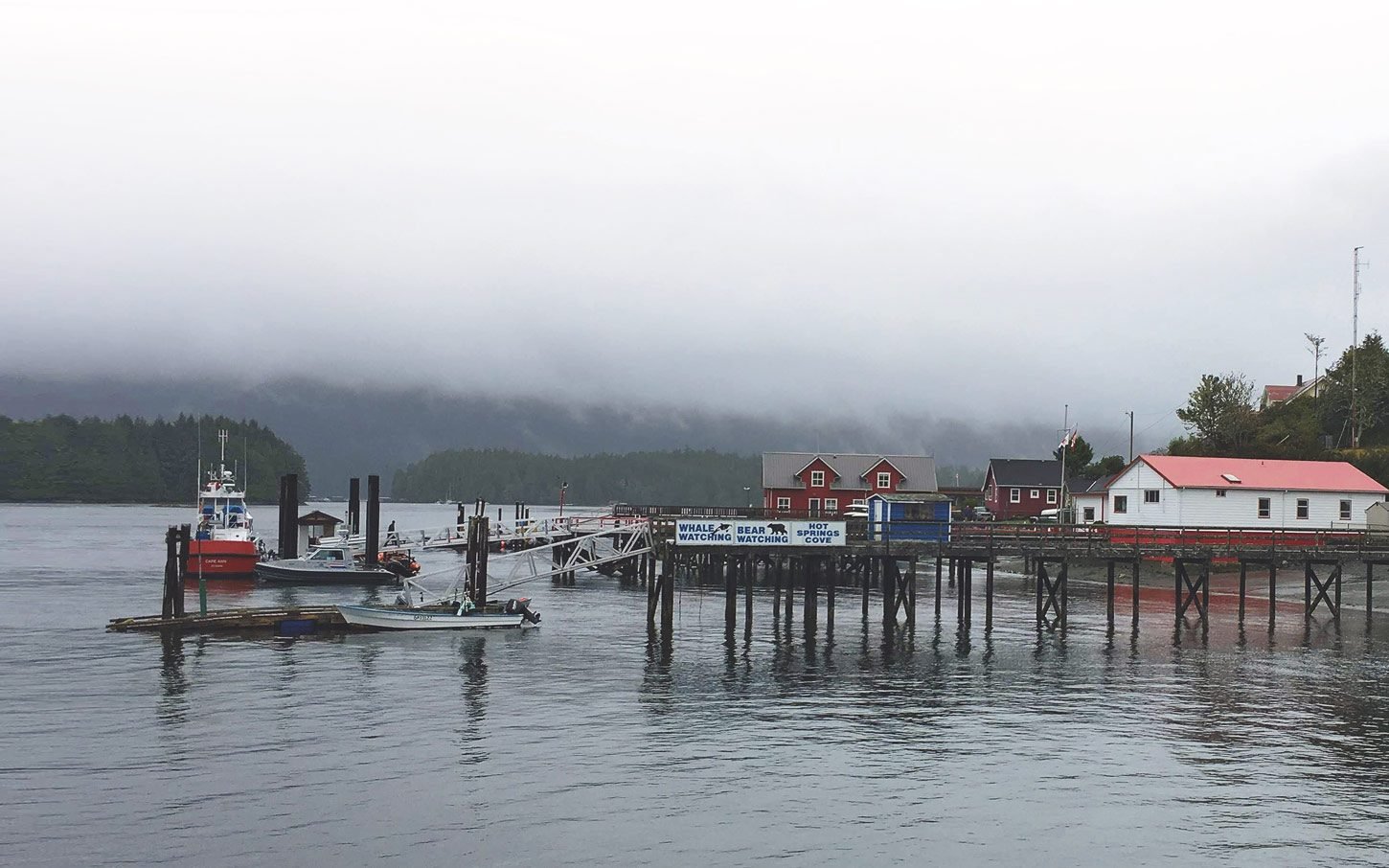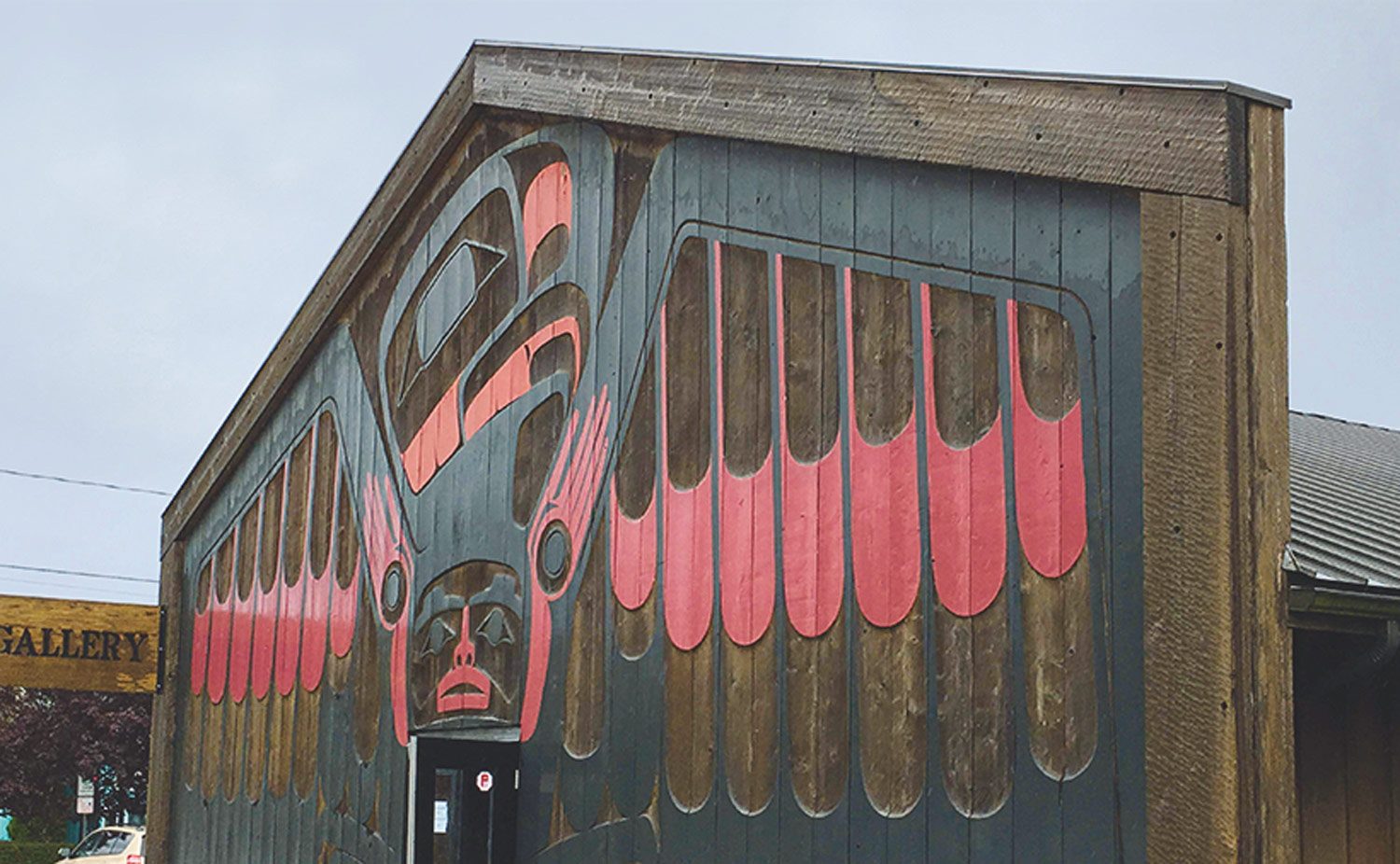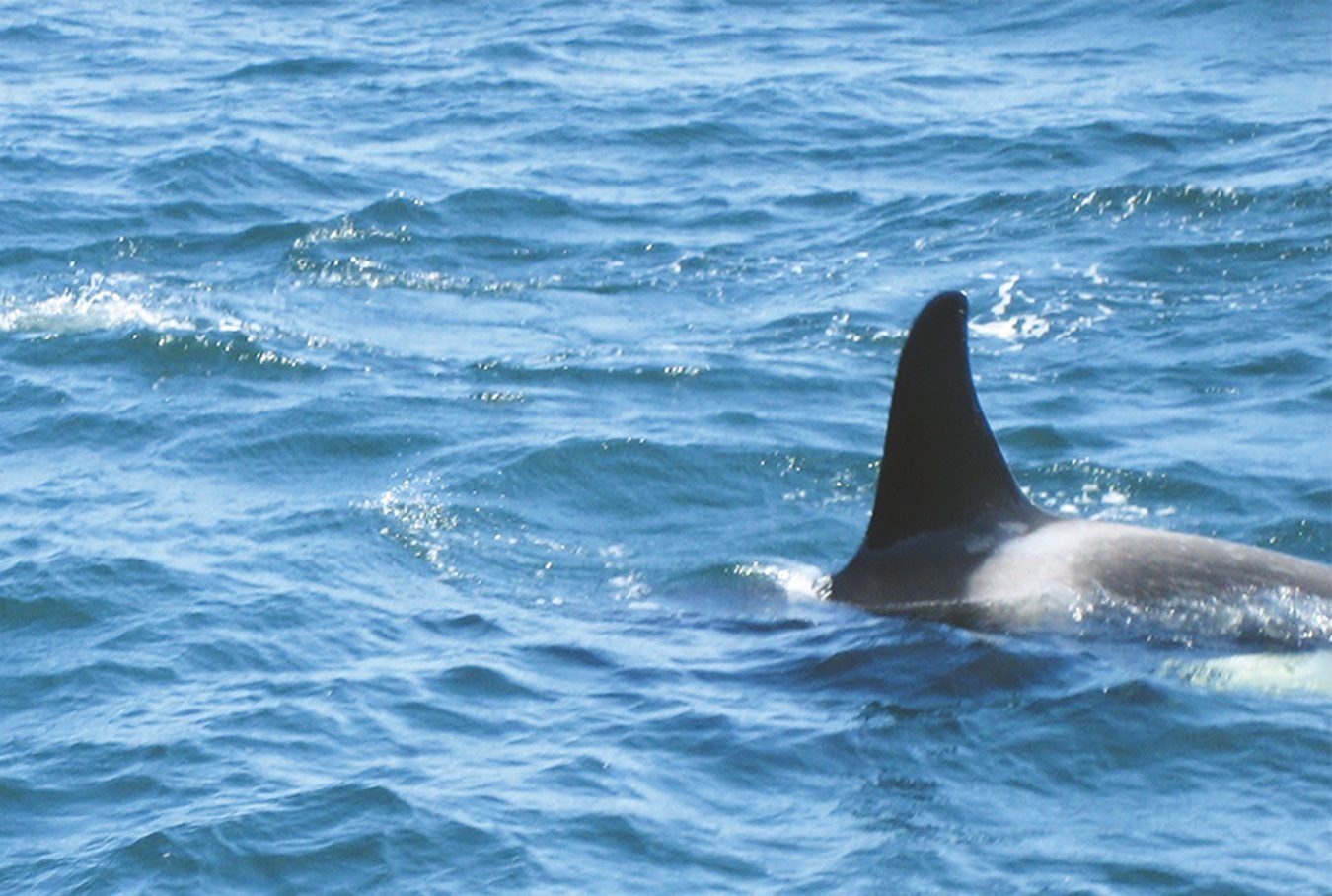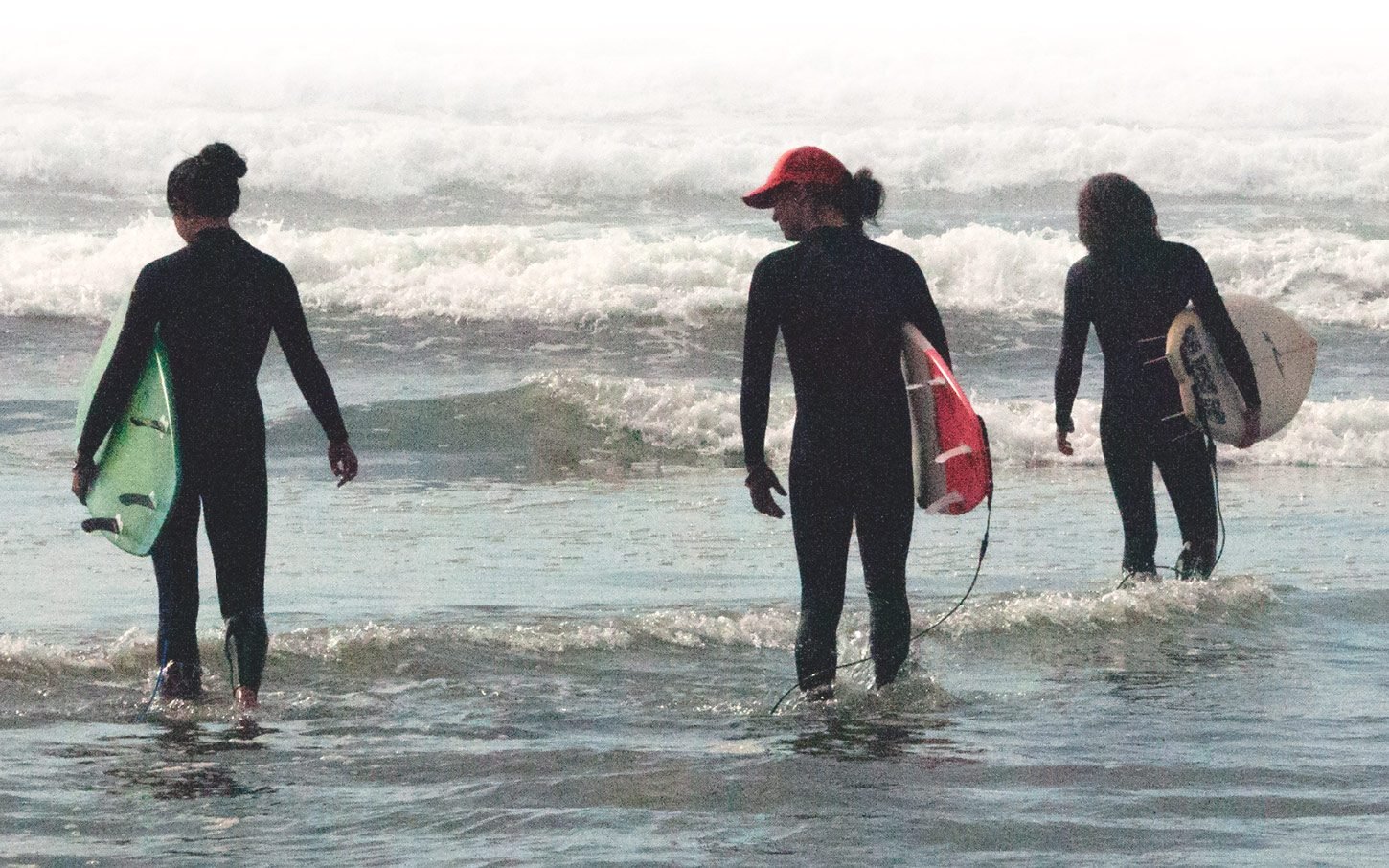
Tapestries in motion
The road snakes through the evergreen mountain terrain of Vancouver Island to come to a fork on the Pacific Ocean’s Esowista Peninsula. I head north with my partner Sue towards Tofino’s diverse gallery of Indigenous culture, unconventional folklore and tapestries of natural phenomena in motion.
Windows down, wisps of sea air flooding into the car, we stop at Pacific Rim National Park as the surf crashes onshore. A handful of gigantic rocks interrupt this spectacularly long beach, its namesake. Barefoot, we wade into the chilly incoming tide’s invigorating wash.
Back on the road, a sign warns that this is a tsunami route, a reminder that this is part of the Pacific Ocean’s volcanic “ring of fire.” Further on, depictions of cedar carvings and symbolic totem poles are displayed by the Tla-o-qui-aht First Nation, one of three First Nations Nuu-chah-nulth tribes cohabiting in the Clayoquot Sound region.
Nearing Tofino, a teepee sits at the side of a coffee shop. Cyclists carry their surfboards like badges of freedom, making their way to one of the nearby bays at MacKenzie Beach, North or South Chesterman, or Cox Bay. Once known as a “hippie haven,” Tofino offered mild winters, and surf and sand with a commune lifestyle, attracting thrill-seekers from all over the globe. Despite the growth in and around the town, evidence remains of its laidback defiance of a developing world.
An array of laced sneakers are strewn across electric cables in a back street, while nearby a painted trash can depicts a high-flying skateboarder against the shoreline. Coincidently, a skateboarder, topped with swinging dreadlocks, glides down the street, as if the trash can image gives him licence to fly.
Another sight that draws my attention is a brightly coloured van painted mostly yellow and red with purple script dominating the van’s side that reads “Oh Yeah!” It also displays a drawing of a blonde beauty with flashing eyes and lacquered fingernails.

Art and culture in Tofino
Tofino’s resident population of 2,000 swells many times over at the height of the summer, catering to tourists’ activities and amenities. Protecting its environment and visitors’ impact on ecosystems is a prime concern, and many seasonal events focus on maintaining the area in a natural state. Tofino’s Indigenous people and residents have an important message to all who venture here: “Leave only footprints, take only memories.”
The Indigenous community emphasizes the preservation of their First Nations culture with festivals honouring whales, salmon, shorebirds, surfing, cedar wood carvings and a host of other traditions.
On Tofino’s main Campbell Street thoroughfare, changing trends present a maze of older, established businesses aligned with the new. The Roy Henry Vickers Gallery is incorporated into a traditional longhouse, featuring its authentic Native ancestral art forms blended with traditional West Coast images.
Vickers and other artisans maintain the distinct Pacific Northwest Indigenous lifestyle designs honouring whales, salmon and thunderbirds in pictures and cedar carvings. Often painted in red and black, these images depict animals from the land and sea that continue to sustain the population and are seen as mythical creatures. Unique characteristics include shapes such as ovoid, U and S forms, and feature extremities like bird claws, orca flippers, animal feet and so on.
Discover more hidden gems of British Columbia.

Whale-watching opportunities abound
Whale watching is a major Tofino attraction. Boat-tour operators shepherd visitors to Tofino’s outer reaches, where transient killer whales (orcas) appear throughout the year, while other resident orcas frequent the waters year-round in mother-led groups of six or less. Their black upper bodies with the distinct white saddle-patch markings behind the dorsal fins and white underbellies are visible whenever they breach with a resounding slap upon the churning sea. When diving, their flukes wave in a spectacular farewell until, minutes later, exhaling blowholes emerge some distance away.
During a two-month period in the spring, the grey whale migration passes offshore, where as many as 20,000 of these massive mammals journey from their feeding and nesting areas in Mexico’s Baja Peninsula to the Bering Sea summer feeding grounds. Grey whales are distinguishable by multiple scars left by encrusted barnacles. They feed by churning the ocean floor, their baleen filtering the rich marine harvest from the sediment. Consuming up to 1,400 kilograms of food a day, they grow to be 15 metres long.
Winter offers another event in the form of storm watching. The most intense storms draw fearless visitors to challenge hurricane-force winds and torrential rain. Vast ocean swells and mountainous waves crash onto rocks, soaking everything in their path. The storms are invigorating if observed from a safe distance.
Find out what it’s like kayaking with humpback whales in the Johnstone Strait.

A top surfing destination
Tofino is among Canada’s best surfing locations. Strolling along Cox Beach, the cooler waters necessitate that surfers don wetsuits. Every day, dozens of surfers dot the bay, carrying long and shortboards.
We spot a young couple heading out with longboards. He helps attach the leash to her wrist and then his own, before rolling into the water keeping a respectful distance from other surfers. Now up to their waists, they gently push the boards towards the teeming waves. She turns, points the board to shore and treads water as her partner pushes further out. She selects her wave and stands up on the board, finds her line and skirts the crest with perfect balance. Artistry in motion, prolonging the crest, she floats as if on air for about 20 seconds, and lands in the beach’s shallow water with a smile that says, “Let’s do that again!” She waits for her partner to catch his wave before they push out again. Finally surfed out, they wander back across the sand, skipping over driftwood and bypassing the ever-present seaweed drawn in by the churning tides.
The massive strands of seaweed on the beach cling together. The mainly brownish kelp that resembles snakes is clustered with smaller foam-fingered seaweed. The seaweed, aided by photosynthesis, enables the production of organic compounds from carbon that feed marine life, and it also contains and limits the carbon pumped into the atmosphere, much like plants and trees do. These silent servants of the seas are as important to maintain as the vast rainforest. Seaweed is an essential part of the planet’s well-being, and another masterpiece of our ecosystems. Protecting the waters is a balancing act Tofino is trying hard to achieve.
Whether it is Indigenous crafts, the barnacle scars of a grey whale or the skills of expert surfers, Tofino leaves lasting memories for all who witness its gallery of treasures.
Tofino also made Reader’s Digest’s list of the 10 places in Canada every Canadian needs to visit.